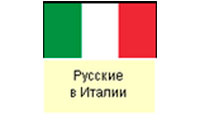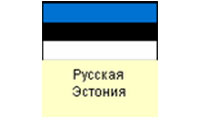The History of Student Corporation Fraternitas Arctica
Founded on the 7th of November 1880 in Riga.
Colours: gold-black-red.
Colours of Deckel: black-gold-red.
Motto: Р.С.Т. (Рцы Слово Твердо (Rci Slovo Tvjerdo), be true to your word).
On the 21st of October 1880 15 comilitones (former members of a recently disbanded student fraternity Borysthenia) and 11 Fechtbodisten, mostly students of Russian origin, decided to form a new, this time Russian, fraternity with the name “Fraternitas Arctica” and with colours gold-grey-red.
Since one student fraternity in Germany already had these colours, Fraternitas Arctica changed its colour scheme into gold-black-red (with black-gold-red for Deckel) and took up a motto in old Slavic Р.С.Т. (Рцы Слово Твердо), which means “be true to your word”. Fraternitas Arctica received membership in Riga Chargierten Convent (C!C!) on the 6th of November 1880. The next day (the 7th of November 1880) senior of C!C! informed the Convent of Fraternitas Arctica about the official recognition, and since then the fraternity celebrates this date as the date of foundation. Afterwards, the Convent of Fraternitas Arctica decided upon the embroidery on the Deckel: in the middle of the top part of the Deckel is depicted the fraternity’s golden Zirkel with an exclamation mark which consists of 11 golden points, symbolizing the month of foundation (November). Around the Zirkel are depicted 7 interlaces connected with a single line which symbolize the day of foundation (7). The first presidium consisted of the following members: senior - David Richter; vice-senior - Victor Brokmiller; secretary – Ivan Jevecky; olderman - Karl Koch.
The new fraternity, among the members of which, apart from Russians, were students of other nationalities, supported the first Latvian fraternity in Riga (Selonia), which members were struggling for the right to wear their colours openly, and Fraternitas Arctica, together with Polish fraternities Arconia and Veletia, voted for the recognition of Selonia.
In 1915 Riga Polytechnic Institute (earlier Politechnicum) was evacuated to Moscow. Fraternitas Arctica moved to Moscow as well, where its active life continued till the end of the 1st semester of 1916 (even though most of the members were conscripted). With the beginning of the Revolution, Fraternitas Arctica discontinued its activity. During the World War I, Revolution in Russia and Civil War in Russia, the fraternity lost many of its members. When the society of filisters was founded in the December of 1921 in Riga it became possible to establish contacts with only 55 members of the fraternity out of 455 (total number of members by the August 1914).
On the 8th of February 1922 Fraternitas Arctica (with its active Convent consisting of 3 comilitones and 1 Fechtbodist) renewed its active life and was matriculated by the University of Latvia, while on the 31st of December 1922 it became a member of the Convent of Presidiums (Prezīdiju Konvents or P!K!). In the autumn semester of 1922 26 new Fuchsen joined the fraternity. By the may of 1940 the fraternity consisted of 180 members. During its active life Fraternitas Arctica concluded cartel treaties with the following student fraternities: Neo-Ruthenia (Saint-Petersburg), Vironia (Riga, later Tartu), Fraternitas Slavia (Tartu), Fraternitas Ruthenia (Tartu), Boeteia (Tallinn), Fraternitas Ergonia (Tallinn), Fraternitas Slavia (Tallinn), Fraternitas Slavia (Prague).
Nowadays, Fraternitas Arctica is the only Russian student fraternity in the world. And even though Fraternitas Arctica is Russian fraternity, among its members have always been Latvians, Polish, Germans as well as representatives of other nations, who feel themselves connected with Russian culture. Fraternitas Arctica has always been a non-political organization. The aims and ideals of the fraternity have always been the same: the achievement of true student friendship, preservation of old Russian academic traditions, tolerance towards other nations. For the first time Fraternitas Arctica was in the head of the Convent of Presidiums in the 2nd semester of 1924, and for the second time in the 1st semester of 1933. After the restoration, Fraternitas Arctica presided in P!K! in the autumn semester of 2011, in the autumn semester of 2021 and the spring semester of 2022.
In 1940 the fraternity was abolished by the Soviet regime. The fraternity renewed its active life in Western Germany after the World War II. In 1950s the global Convent of Fraternitas Arctica moved to USA. Since the January of 1988 the fraternity’s global Convent was placed in Canada. Being abroad, the fraternity actively participated in the active life of the Association of Latvian Fraternities (Latvijas Korporāciju Apvienība or L!K!A!). In Latvia the active life of the fraternity still continued, though in smaller scale. But, nevertheless, the gatherings of the rightful members of the organization were regularly taking place, new Fuchsen were joining the organization and even a song-book was published.
On the 19th of May 1990 in the historical building of the organization on Maza Smilšu street 8 the gathering of the old members of the fraternity decided to renew the active life of Fraternitas Arctica as of an officially registered organization on the basis of existing statutes.
The legal work of Fraternitas Arctica in Latvia was restored by the following filisters:
- Aleksey Dogadkin (mech. et arch., was accepted in Riga in the autumn semester of 1924);
- Alexander Putniņš (rer. nat., was accepted in Riga in the autumn semester of 1932);
- Andrei Titov (ing., was accepted in Riga in the spring semester of 1934);
- Kirill Molchanov (ing., was accepted in Riga in the spring semester of 1934);
- Boris Krivoshapkin (ing., was accepted in Riga in the autumn semester of 1934);
- Vladimir Schelegov (arch., was accepted in Riga in the autumn semester of 1934);
- Victor Karpovsky (agr., was accepted in Riga in the autumn semester of 1937);
- Leonid Osipov (chem., was accepted in Riga in the autumn semester of 1938);
- Victor Putnev (mech., was accepted in Riga in the spring semester of 1939);
- Eižens Upmanis (arch., was accepted in Riga in the autumn semester of 1980).
The first presidium, which was elected after the restoration, consisted of the following arcts: senior – ph! Leonid Osipov, vice-senior – ph! Alexander Putniņš, secretary – ph! Eižens Upmanis, olderman – ph! Boris Krivoshapkin (he was also the last olderman of Fraternitas Arctica before the fraternity was abolished in the spring-autumn semester of 1940).
Famous members of Fraternitas Arctica are:
- count Mstislav Tolstoy, vice-governor of Saint-Petersburg in 1913–1915;
- artist Constantine Rausch von Traubenberg;
- author Mikhail Prishvin;
- artist Nikolay Bogdanov-Belsky;
- theorist of law, historian and author Vasily Sinaiski;
- professor, entomologist, rector of the University of Daugavpils (2007–2018, since 2023) Arvid Barshevsky;
as well as many other science, military, art and political figures.








